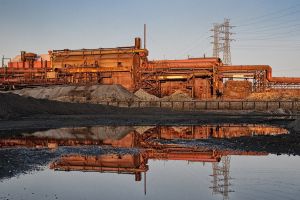While the Midwest outpaces other US regions on innovation and talent-creation metrics, it continues to export its wealth and new discoveries to the coasts.
Key Findings
Since the 2016 election was tipped by voters in Rust Belt States—many of whom are on the short end of national trends of job dislocation and growing geographic economic disparities—interest in effective strategies for supporting new business and job growth in this important region has intensified.
The states of the upper Midwest share more than their swing-state status. There is a unique and shared economic and social development storyline to the industrial heartland that extends across all or part of 12 states from Minnesota and Missouri in the West, across the Great Lakes and up the Ohio River Valley to Western New York, Pennsylvania and West Virginia in the East.1 The cradle of America’s great industrial economy, the region has borne inventions such as the automobile and the assembly-line manufacturing process. The once-thriving small factory towns are now anxious about their job prospects and futures.
Still, the region’s network of colleges and universities generate top talent that in turn creates new discoveries, startups, and innovation. The region’s vitality and economic potential has attracted a renewed commitment by the nation’s business, civic, and philanthropic leaders to invest in the Heartland. Yet despite all the interest and media coverage, the region still struggles to attract and retain venture capital funding and financing to turn its innovations into new business and jobs locally. While the Midwest outpaces other US regions on innovation and talent-creation metrics, it continues to export its wealth and new discoveries to the coasts.
Several states have created state-backed funds to support local venture-growth strategies, but a regional fund-of-funds can accelerate attraction of new capital and investment in promising companies. With the current political and economic interest in the region, such a fund could catalyze additional job and business growth and help more Midwest workers find a place in today’s changed economy.
An edited version of this piece, The Rust Belt Needs Capital to Turn Talent and Innovation into Jobs, has also been published by the Brookings Institution where John Austin is a nonresident senior fellow, Metropolitan Policy Program.
- 1Austin, John C., "A tale of two Rust Belts: Diverging economic paths shaping community politics," The Avenue, Brookings Institution, June 30, 2017.


